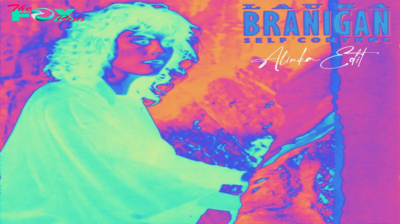Entertainment
AMERICAN THEATRE | It Was 40 Years In the past At present
From Sam Shepard in 1984 to Qween Jean in 2023.
It was virtually known as Stage.
“That’s the identify that Jim and I and Laura favored most,” mentioned Terry Nemeth, the unique writer of this journal, about its launch in April 1984 below founding editor Jim O’Quinn and affiliate editor Laura Ross. “However Peter Zeisler was adamant that it’s American Theatre.”

It appears clear in hindsight that Zeisler, longtime government director of our writer, Theatre Communications Group, was proper to insist. In naming {a magazine} for each the nation and the artwork type/trade too many nonetheless affiliate with only one U.S. metropolis, TCG was spelling out each its prime allegiance and its protection space: the resident theatre motion that had sprung up in dozens of U.S. cities and cities within the many years since Theatre Arts, the storied New York-centric theatre journal, folded in 1964. By exhibiting that burgeoning area to itself and to the world, American Theatre hoped each to acknowledge and encourage its flourishing.
“It’s known as Theatre Communications Group, however there was little or no communication happening,” mentioned Lindy Zesch, longtime deputy director of TCG, who joined the group in 1972 and labored there by 1995. The notion of making {a magazine} was on her and Zeisler’s minds from the beginning, and by the late ’70s, the seeds of each the journal and the group’s different publishing concern, TCG Books, have been planted with a number of guidebooks, revealed performs, and a month-to-month publication known as Theatre Communications.
It was that publication that O’Quinn, a Louisiana-bred newspaperman who’d come to review efficiency at NYU, was initially employed to edit in 1982. He joined Laura Ross, a younger dramaturg simply out of Yale Drama College, who recalled laying out the Theatre Communications publication with scissors and paste. Nemeth was employed quickly after to information all TCG publications, and he helped lead the cost to take the ad-free, 40-page publication as much as the subsequent degree. As Nemeth informed me, “We thought, mainly, for those who simply took that publication, put advertisements in, and made the images larger, you had {a magazine}. Every thing was there by way of the fabric.”

In fact, ideally {a magazine} is greater than a super-sized publication. Freelance designer Cynthia Friedman created a spare, clean-lined template, printed “on the very best rattling paper you possibly can discover,” as Nemeth put it. And the journal’s first yr confirmed an admirable mixture of ambition and authority, with penetrating interviews with playwrights Sam Shepard, Athol Fugard, and Wole Soyinka; with multi-hyphenate energy couple Jessica Tandy and Hume Cronyn; with set designer Eugene Lee. There have been profiles of avant-garde icons Mabou Mines, the Residing Theatre, and Meredith Monk, and ruminations from critics like Richard Eder and James Leverett, TCG’s director of literary providers.

There have been additionally impressed pairings of voices: an intergenerational dialog between Lillian Hellman and Marsha Norman; the back-and-forth between a pair of then-wunderkinds, Peter Sellars and Des McAnuff; a reprint of Studs Terkels’s illuminating dialogue with Lorraine Hansberry; Kenneth Cavander’s summit with Joseph Campbell on the untapped myth-making potential of the American theatre.
There was additionally a certain quantity of fabric you may look forward to finding in a publication: listings, information objects, op-eds from leaders within the area, a report from an trade convention—not simply any commerce gathering, in fact, however the TCG Convention in Amherst, Mass., in June 1984, the place visitor audio system included Arthur Miller, Ying Ruocheng, John Guare, and Derek Walcott. Nor have been the information objects in these early years mere logrolling: Within the midst of the Reagan-Bush period, AT rang the alarm about threats to arts funding and international trade within the midst of the Chilly CoNFLict.
The journal would hold its finger on the heart beat of the world exterior the stage doorways within the many years to come back, because the theatre and its artists confronted the HIV/AIDS epidemic, the NEA tradition wars, the aftermath of 9/11, the Nice Recession, proper as much as #MeToo, Covid, and the racial reckoning of latest years. If an emphasis on cultural fairness looks like a brand new course to a few of our readers, contemplate that August Wilson’s “The Floor on Which I Stand,” and the debates it impressed, graced these pages in 1996.
O’Quinn would freely admit that the steadiness between being a “home organ” and an unbiased journal was a tough one to strike from the beginning. Whereas we have now all the time tried to incorporate a refrain of impossibly assorted, generally contentiously divided voices, there isn’t a avoiding that, beginning with our identify, American Theatre has all the time sought to inform the tales of the nation’s performing artists and establishments roughly on their very own phrases.
Zesch mentioned she measures the journal’s success by way of cross-pollination—i.e., the extent to which AT put avant-garde troupes and homegrown ensembles like Steppenwolf or Cornerstone on the identical pages because the nation’s flagship institutional theatres, and vice versa.
“The regional theatre profile relied on subscription and audiences and serving a neighborhood,” Zesch mentioned. “Experimental theatre, however, was way more within the content material and the artwork. I’m not saying that regional theatre wasn’t concentrating on that, however they have been simply two various things. What we tried to do was carry them collectively and have them affect one another. I have to say that was a vastly profitable mission.”
The journal’s mandate, although, isn’t nearly exhibiting however about telling. I’ll give O’Quinn—who retired in 2015 and died in 2021—the final phrase.
“The act of theatre occurs between artists and viewers, but it surely’s not full,” he informed me years in the past. “As a result of theatre is an artwork type of language and concepts, the discourse that follows the act of theatre is an integral a part of it. When you might have a neighborhood that has good theatre however has awful theatre critics—if the discourse that derives from theatre is weak or defective—then that weakens the theatre itself. So I really feel like this can be a essential element of the act of theatre. To have a spot, a discussion board for dialogue of it, is crucial and essential.”
Rob Weinert-Kendt (he/him) is editor-in-chief of this journal.
Associated
-

 Entertainment9h ago
Entertainment9h agoBeyonce to Headline Halftime Show During NFL Christmas Game
-

 Entertainment10h ago
Entertainment10h agoDid You Correctly Answer This Poughkeepsie Related Jeopardy Question?
-

 Entertainment15h ago
Entertainment15h agoWhat to Know About Denzel Washington’s Gladiator II Character
-

 Entertainment16h ago
Entertainment16h agoChanges Made in New York to “Men Working” Construction Signs
-

 Entertainment1d ago
Entertainment1d agoRemembering Song Jae-rim: A Look at His Best Movies and K-Drama Performances
-

 Entertainment1d ago
Entertainment1d agoAmerica On CoffeeWe’re simply inviting you to take a timeout into the rhythmic ambiance of our breakfast, brunch and/or espresso alternatives. We’re pleased everytime you cease by.SELF CONTROL
-

 Entertainment1d ago
Entertainment1d agoOrange County Choppers Is Ready For Its Big Comeback
-

 Entertainment1d ago
Entertainment1d agoThe Real Story of Geta and Caracalla, the Roman Brother Emperors in Gladiator II
























